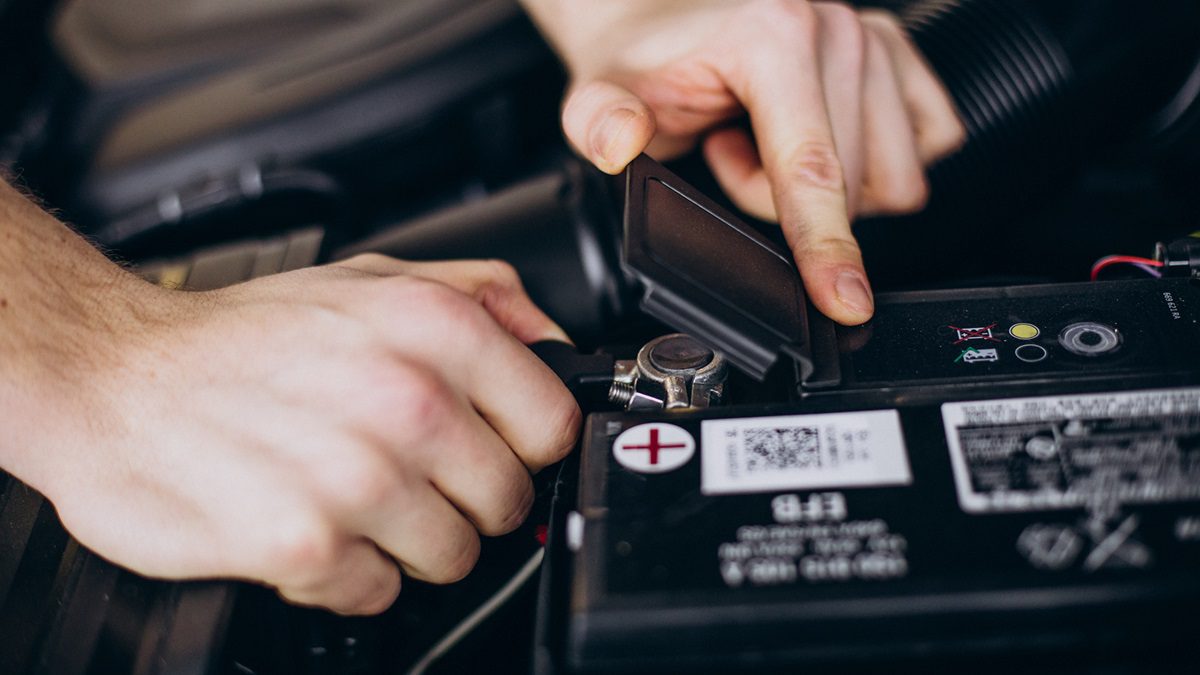Car Fuse Box Check in Spring Maintenance Guide


Knowing how your Jeep’s fuel system works is key to keeping it running smoothly and making sure it lasts for years to come. While many people think regular oil changes and tire rotations are enough, the fuel system plays a critical role in your Jeep’s overall health. Ignoring signs of wear or skipping maintenance can lead to costly repairs down the line. In this post, we’ll focus on frequently asked questions about Jeep fuel system maintenance in Evanston to help you keep your vehicle running smoothly.
As temperatures rise, your vehicle begins to adjust after enduring months of cold weather. A car fuse box check helps identify hidden damage caused by freezing temperatures, moisture, or corrosion. This step is crucial for ensuring that your car is ready for the warmer months ahead..
Why a Car Fuse Box Check in Spring Matters
A car fuse box check in spring can prevent unexpected electrical problems as you transition from winter to warmer weather. The fuse box is like the command center of your car’s electrical system, and just like any busy control hub, it needs attention after working overtime during winter.
Cold weather, moisture, and road salt can lead to corrosion or loosened fuses. A thorough car fuse box check helps you spot these issues early. Small signs of wear can quickly snowball into major problems if left unnoticed.
Your car’s lights, radio, windows, and other essential electronics rely on the fuse box functioning properly. By performing a car fuse box inspection, you’re safeguarding your vehicle against mid-season breakdowns. It’s a small investment of time with big rewards.
How Do You Check a Car Fuse Box in Spring?
You can easily perform a car fuse box check in spring with just a few tools and careful attention. In most vehicles, the fuse box is located under the dashboard or in the engine compartment.
Here are tips to help you keep your vehicle’s electrical system running smoothly this season.
- Locate the fuse box: Most cars have two fuse boxes, one under the dashboard and another under the hood. Consult your owner’s manual to locate both.
- Inspect for visible damage: Open the fuse box and look for signs of corrosion, moisture, or burnt fuses. This is often where winter leaves its mark.
- Test each fuse: Use a fuse tester or multimeter to check each fuse’s continuity. This step ensures all connections are working properly.
- Replace any damaged fuses: Swap out any blown or corroded fuses with ones of the same rating. Never use a higher-rated fuse, as it could damage the circuit.
- Re-secure and seal: Make sure the fuse box is properly closed to protect it from moisture and debris throughout spring and summer.
A car fuse box check helps you spot issues before they become expensive repairs. Completing this step also ensures that your spring car maintenance routine is fully effective.
Signs Your Car Needs a Fuse Box Check
A car fuse box check becomes even more critical when your car shows common warning signs. Not every fuse problem immediately causes total failure, but small signs should never be ignored.
Look out for these signs:
- Flickering or dimming lights: If your headlights, interior lights, or dashboard lights seem weaker or inconsistent, it may point to a fuse issue.
- Malfunctioning electronics: Power windows, radios, wipers, and other accessories acting up? This could signal a problem in the fuse box.
- Burning smell near the fuse box: A faint burnt smell usually means a blown fuse or overheating wire, which needs immediate attention.
- Warning lights on the dashboard: Some modern vehicles will show warning lights when there’s an electrical fault linked to the fuse box.
- Intermittent electrical problems: If issues come and go without pattern, performing a car fuse box check could help catch loose or corroded connections.
Any of these signs indicate it’s time to include a car fuse box check in your maintenance plan. Addressing small issues early avoids larger repairs later. After checking for these symptoms, it’s a good time to move into your broader spring car maintenance.
Complete Spring Car Maintenance Checklist
Spring brings the perfect opportunity to freshen up your entire vehicle. A car fuse box check is a big part of the process, but it’s not the only task to complete for a fully reliable ride.
These maintenance tasks help your car recover from winter wear and get ready for warmer days ahead.
- Check Tire Pressure and Tread Depth: Cold weather affects tire pressure. Adjust and inspect your tires for uneven wear or damage.
- Inspect the Brakes: Salt and moisture can corrode brake components. Test brake responsiveness and listen for squeaks.
- Change Oil and Oil Filter: Fresh oil helps keep your engine running smoothly through the heat.
- Test the Battery: Batteries often struggle after winter. Make sure yours holds a strong charge.
- Perform a Car Fuse Box Check in Spring: As explained earlier, this step prevents electrical surprises.
- Inspect Belts and Hoses: Look for cracks, wear, or looseness, especially after winter stress.
- Wash and Wax: A thorough cleaning removes corrosive salt and protects your car’s finish.
- Top Off Fluids: Check and refill windshield washer fluid, coolant, brake fluid, and transmission fluid for optimal performance.
- Replace Wiper Blades: Wipers take a beating during winter. Swap them out so you’re ready for spring rainstorms.
- Test the Air Conditioning System: Before temps rise, make sure your A/C is cooling properly and doesn’t have any leaks or weak airflow.
- Check the Cabin Air Filter: A fresh cabin filter improves air quality inside your car, important during allergy season.
- Examine Headlights and Brake Lights: Clean lenses and replace any bulbs that have dimmed or burned out.
- Listen for Unusual Noises: Take your car for a short drive and note any clunks, squeaks, or vibrations that need attention.
Completing this checklist will get your car spring-ready. Performing each step, including the essential car fuse box inspection, gives you peace of mind for the season ahead.
Common Mistakes to Avoid During a Car Fuse Box Check in Spring
Even with the best intentions, some mistakes can cause more harm than good. Taking your time during a car fuse box check in spring can save you from damaging the system or missing important issues.
- Using the wrong fuse rating
Always match the exact rating. Using a higher or lower amp fuse may damage your vehicle’s circuits. - Skipping fuse testing
Fuses may look intact but still be faulty. Always test each one, not just the ones that seem visually damaged. - Ignoring minor corrosion
Even small signs of rust or white powder on fuses and connections can grow into bigger problems. - Forgetting to check the second fuse box
Some cars have more than one. Missing one could mean you leave hidden damage unchecked. - Leaving the fuse box open
After completing the car fuse box check, always seal it properly to prevent moisture from creeping in.
Avoiding these mistakes helps you get the most out of your spring car maintenance. Plus, you’ll feel more confident knowing you’ve done the job right.
Benefits of a Car Fuse Box Check in Spring
A car fuse box check in spring is not just about preventing electrical failures , it comes with plenty of additional benefits. Keeping your fuse box in good condition helps your vehicle perform better throughout the spring and into the hotter months.
- Improved driving safety: Reliable lights, wipers, and other electrical components help keep you safe in spring showers and late sunsets.
- Avoid costly repairs: Catching fuse or wiring issues early prevents them from damaging larger systems like your alternator or starter.
- Better fuel efficiency: A healthy electrical system reduces strain on the battery and alternator, improving your vehicle’s efficiency.
- Longer lifespan of electrical components: Regular checks, including a car fuse box check, extend the life of switches, sensors, and motors.
- Peace of mind: Knowing your car’s electrical system is ready for the season means fewer surprises on family trips or daily commutes.
A car fuse box check in spring is a small step with big payoffs. It works hand-in-hand with your spring car maintenance to keep your vehicle reliable and ready for anything.
Tips for Safe and Easy Fuse Replacement
A car fuse box check in spring often leads to replacing one or more fuses. This task may sound intimidating, but with a few simple tips, you can do it safely and correctly without needing professional help.
- Disconnect the battery first – Always disconnect the battery to avoid short circuits during the replacement process.
- Use the owner’s manual – Your manual will show you the fuse box diagram, fuse ratings, and correct replacement procedure.
- Use the proper tools – A fuse puller or small needle-nose pliers will make removal safer and easier.
- Inspect replacement fuses – Only install clean, undamaged fuses with the exact rating as the old ones.
- Secure everything properly – After replacing the fuse, double-check that it’s seated correctly and the fuse box is sealed tight.
Using these tips during your car fuse box check in spring reduces the risk of errors and protects your car’s electrical system.
Don’t Skip Your Car Fuse Box Check in Spring – Contact HEART Auto Care
A car fuse box check in spring plays a huge role in keeping your vehicle safe, efficient, and ready for warm-weather driving. You reduce the risk of electrical failures and avoid costly repairs. Pair this simple step with a complete spring car maintenance checklist for the best results. Always consider getting help from trusted professionals when in doubt.
If you’re in the Chicagoland area, contact HEART Auto Care for expert spring vehicle inspections and auto repairs, including a full car fuse box check. Their friendly and skilled technicians will make sure your car is ready for the road ahead. Schedule your service today by visiting Contact HEART Auto Care.










